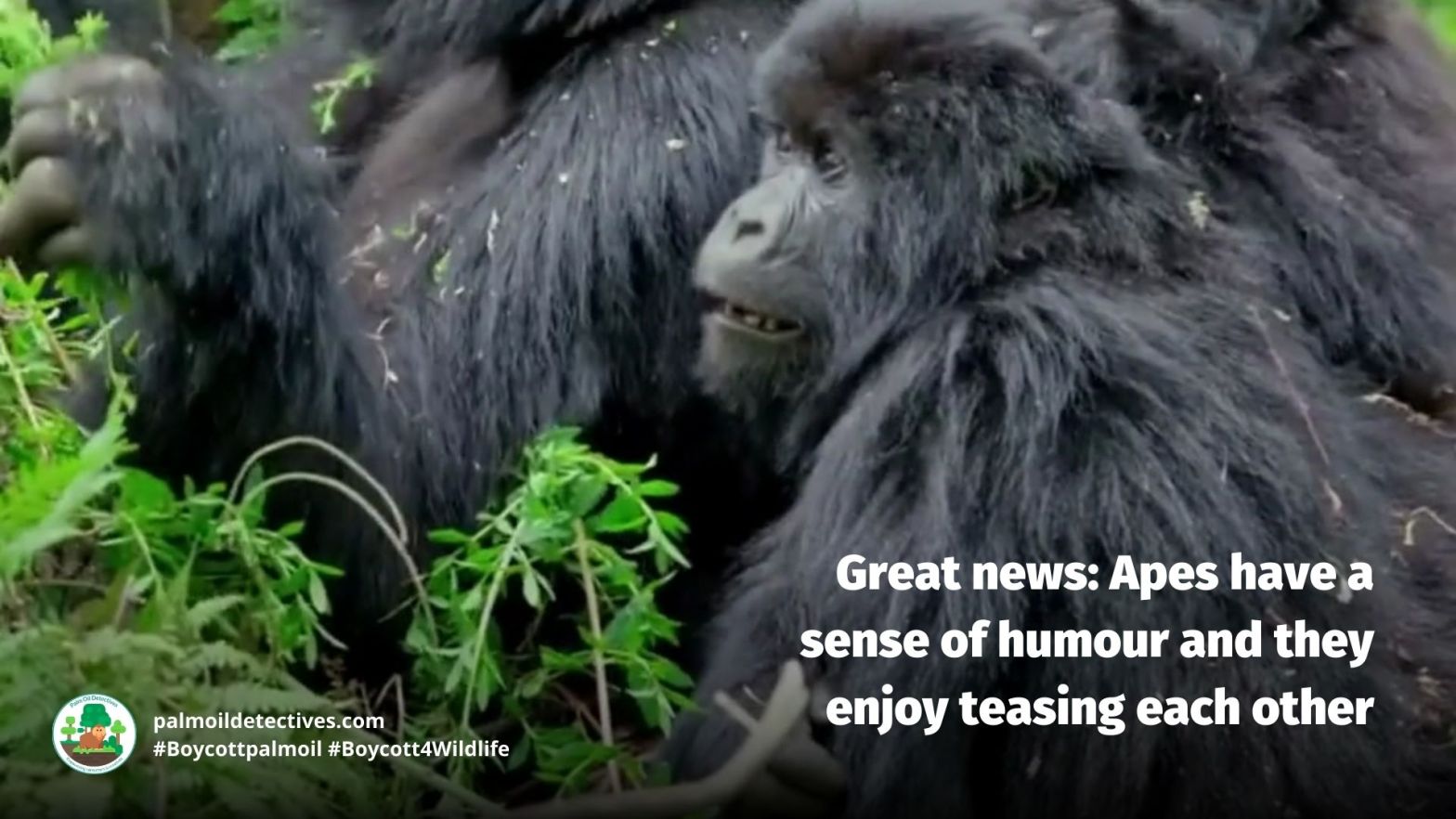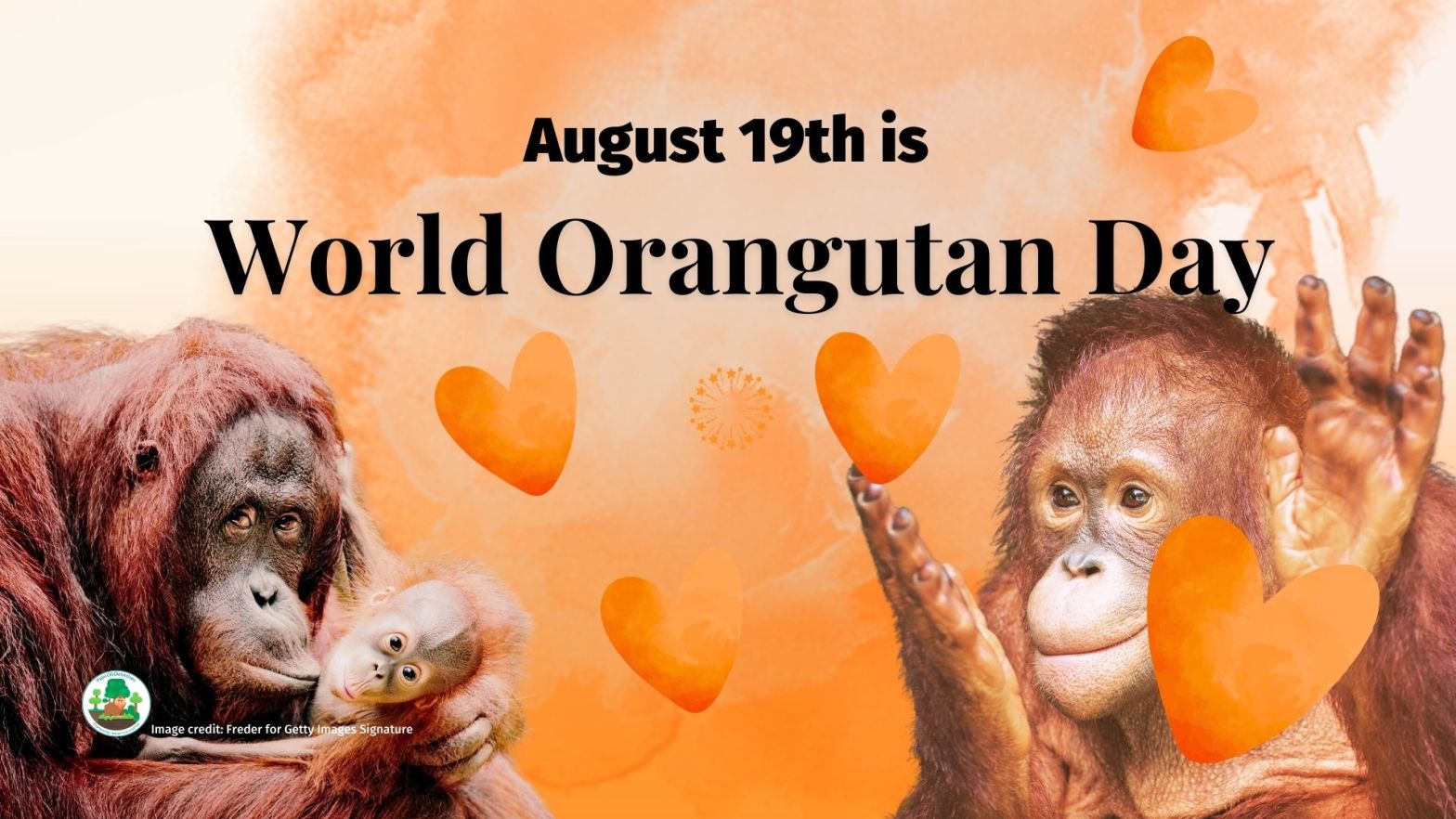New research finds that it is not only human babies who love to playfully tease each other. Researchers reasoned that since language is not required for this behaviour, similar kinds of playful teasing might be present in non-human animals. Now cognitive biologists and primatologists have documented playful teasing in four species of great apes. Like joking behaviour in humans, ape teasing is provocative, persistent, and includes elements of surprise and play. Because all four great ape species used playful teasing, it is likely that the prerequisites for humour evolved in the human lineage at least 13 million years ago.
Tag Archives: Sumatran Orangutan Pongo abelii
August 19th is #WorldOrangutanDay
Although #WorldOrangutanDay falls on the 19th of August, in our opinion, every day deserves to be World Orangutan Day! So here is an infographic that you can download, print and share however you please.
All three species of orangutan are classified as ‘endangered’ or ‘critically endangered’ in S.E. Asia. Their main threat is palm oil deforestation in Indonesia and Malaysia
Conservation activists suing Indonesian zoo could inspire global action on endangered species trade
In a court in rural Indonesia, an environmental group recently filed a lawsuit of global importance. Their case is against a zoo in North Sumatra that it’s alleged illegally exhibited threatened species, including Komodo dragons and critically endangered Sumatran orangutans. Images by Craig Jones Wildlife Photography. Jacob Phelps, Lancaster University The illegal wildlife trade isContinue reading “Conservation activists suing Indonesian zoo could inspire global action on endangered species trade”
Do chimpanzees and orangutans really have midlife crises?
Knowing that chimpanzees and orangutans have personalities, feel emotions and are “almost human” comes as no surprise to most people. However, linking the term “midlife crisis” to chimpanzees and orangutans seems to be somewhat shocking and controversial as we’ve seen from the flurry of interest produced by a paper published this week.
Wildlife Photographer Craig Jones: In His Own Words
One of Britain’s finest wildlife photographers, Craig Jones uses his own words to bear witness to the awesome love and intelligence of orangutans, and also shares stories of the immense suffering of orangutans and other species within RSPO member palm oil plantations. Craig is an absolute inspiration to photographers, animal lovers and conservationists. It is an honour to showcase his work and stories on Palm Oil Detectives.
Eyewitness by Craig Jones: A mother and baby orangutan are rescued from an RSPO palm oil plantation in Sumatra
Bio: Craig Jones One of Britain’s finest wildlife photographers, Craig Jones is also one of the most humble and down-to-earth guys you will ever meet. His photography and stories capture the lives of endangered rainforest animals that we hold so dearly to our hearts: Sumatran orangutans, Sumatran tigers, Sumatran elephants, Siamangs and more. His workContinue reading “Eyewitness by Craig Jones: A mother and baby orangutan are rescued from an RSPO palm oil plantation in Sumatra”
How plywood started the destruction of Indonesia’s forests
Indonesia now has the has the fastest rate of deforestation in the world, driven largely by clearing for palm oil plantations. But the process began long ago, with one of the most common building materials: plywood. As far as commodities are concerned, it was plywood that defined the rainforests of Borneo in the 1970s andContinue reading “How plywood started the destruction of Indonesia’s forests”
The lengthy childhood of endangered orangutans is written in their teeth
Orangutan populations in the wild are critically endangered, and one of the things that may hamper their survival is the time they take to rear new offspring. An orangutan mother will not give birth again until she’s finished providing milk to her previous offspring. Nursing can take a long time and vary across seasons, asContinue reading “The lengthy childhood of endangered orangutans is written in their teeth”
Sumatran Orangutan Pongo abelii
Sumatran Orangutans are iconic species of South East Asia. They live in moist lowland forest, montane forest and peat swamps of Sumatra. Rarely do they travel on the ground and spend most of their lives in the tree tops. They mostly are frugivores but will also on occasion eat meat. There are less than 14,000 Sumatran Orangutans, their main threat is #palmoil, #timber and #mining deforestation. Use your wallet as a weapon and fight for them. Help them and be #vegan, #Boycottpalmoil and #Boycott4Wildlife!









